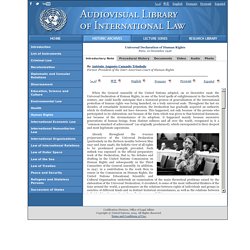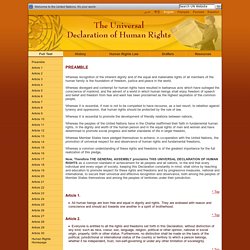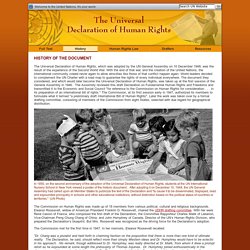

Video: WHAT ARE HUMAN RIGHTS? Video: Can you tell who was born free & equal. Morgan Freeman: The Power of Words. Amnesty International-Signatures. Xword Puzzle DOWNLOAD to use. 2014 Amnesty Case Sheets. ROUGH LETTER OUTLINE. Amnesty case letter examples. Sample letter flush left no indent. Sample Business Letter w indent. Amnesty Terminology. Asylum seeker An asylum seeker is an individual who is seeking international protection.

In countries with individualised procedures, an asylum seeker is someone whose claim has not yet been finally decided on by the country in which he or she has submitted it. Not every asylum seeker will ultimately be recognised as a refugee, but every refugee is initially an asylum seeker. Economic migrant An economic migrant is someone who leaves his or her country of origin purely for financial and/or economic reasons. Durable solutions Durable Solutions are any means by which the situation of refugees can be satisfactorily and permanently resolved to enable them to live normal lives. Human Rights Human Rights are agreed international standards that recognise and protect the dignity and integrity of every individual, without any distinction.
Internal Displacement Internal Displacement is the involuntary movement of people inside their own country. Protection Economic Migrants Refugee Refugee Camp. Easy to read UDHR. Copy of UDHR. United Nations Audiovisual Library of International Law. When the General Assembly of the United Nations adopted, on 10 December 1948, the Universal Declaration of Human Rights, in one of the brief spells of enlightenment in the twentieth century, one could hardly anticipate that a historical process of generalization of the international protection of human rights was being launched, 0n a truly universal scale.

Throughout the last six decades, of remarkable historical projection, the Declaration has gradually acquired an authority which its draftsmen could not have foreseen. This happened, not only because of the persons who participated in its elaboration, nor because of the form which was given to that historical document, nor because of the circumstances of its adoption: it happened mainly because successive generations of human beings, from distinct cultures and all over the world, recognized in it a “common standard of achievement” (as originally proclaimed), which corresponded to their deepest and most legitimate aspirations. U Decl of HR Document. Whereas recognition of the inherent dignity and of the equal and inalienable rights of all members of the human family is the foundation of freedom, justice and peace in the world, Whereas disregard and contempt for human rights have resulted in barbarous acts which have outraged the conscience of mankind, and the advent of a world in which human beings shall enjoy freedom of speech and belief and freedom from fear and want has been proclaimed as the highest aspiration of the common people, Whereas it is essential, if man is not to be compelled to have recourse, as a last resort, to rebellion against tyranny and oppression, that human rights should be protected by the rule of law, Whereas it is essential to promote the development of friendly relations between nations, Whereas Member States have pledged themselves to achieve, in co-operation with the United Nations, the promotion of universal respect for and observance of human rights and fundamental freedoms, Article 1.

Article 2. Article 3. History of Document. The Universal Declaration of Human Rights, which was adopted by the UN General Assembly on 10 December 1948, was the result of the experience of the Second World War.

With the end of that war, and the creation of the United Nations, the international community vowed never again to allow atrocities like those of that conflict happen again. World leaders decided to complement the UN Charter with a road map to guarantee the rights of every individual everywhere. The document they considered, and which would later become the Universal Declaration of Human Rights, was taken up at the first session of the General Assembly in 1946. The Assembly reviewed this draft Declaration on Fundamental Human Rights and Freedoms and transmitted it to the Economic and Social Council "for reference to the Commission on Human Rights for consideration . . . in its preparation of an international bill of rights.
" The Commission met for the first time in 1947. “Dr. Making the World A Better Place: Rights and Responsibilities.